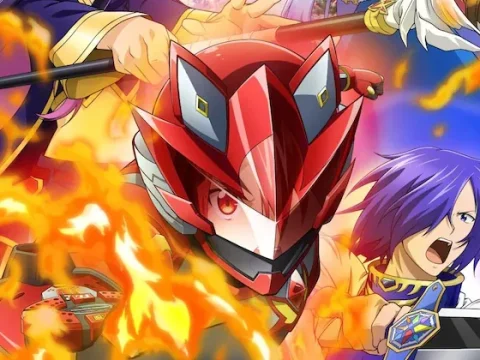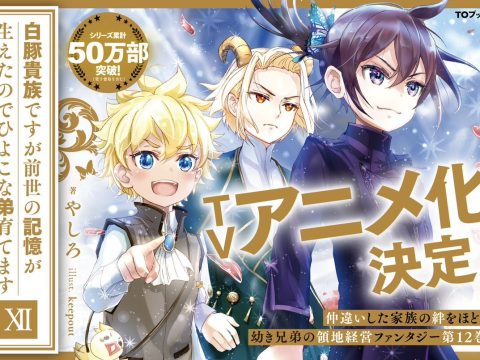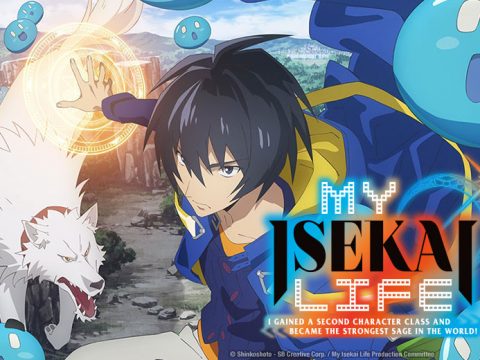All Mucked Up!
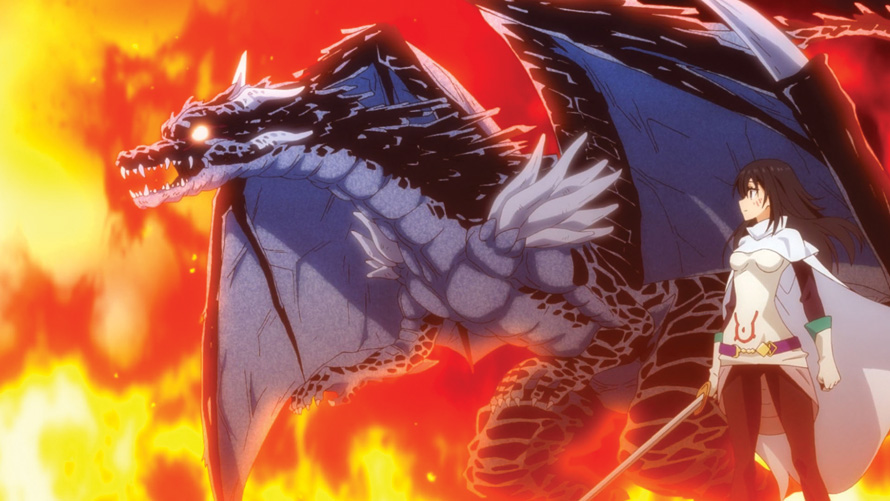
When humble salaryman Satoru Mikami takes a fatal wound protecting his junior coworker from an attack by a knife-wielding assailant, Satoru’s rather ordinary adult life seems poised to end in tragedy. But as Satoru bleeds to death, something strange and magical happens. His delirious ramblings (it’s too hot, it’s too cold, it hurts, I should have been more aggressive, etc.) are interpreted as character creation instructions by a mysterious voice, and when Satoru regains consciousness, he finds himself reincarnated in an unfamiliar body in a world resembling a fantasy video game. Satoru has become a slime, a low-level monster with a surprisingly resilient form.
This is the premise of That Time I Got Reincarnated as a Slime, a 2018 TV anime with direction by Yasuhito Kikuchi and animation production by 8-bit. Based on the series of isekai (“parallel world”) fantasy novels written by Fuse and illustrated by Mitz Vah, That Time I Got Reincarnated as a Slime is a fresh look at a now familiar formula in which an ordinary human protagonist is transported to a world filled with magic and high adventure, often acquiring tremendous supernatural abilities along the way.

But what abilities could a simple slime creature possibly manifest? A nearly limitless number, thanks to two completely overpowered Unique Skills that Satoru acquires with his blubbery new body: Great Sage, a sort of internal companion app that can analyze and provide detailed information appropriate to nearly any situation; and Predator, a fearsome ability that allows the unassuming slime to consume, absorb, and store a seemingly infinite number of things (plants, minerals, other monsters, etc.) inside a stomach equipped with pocket dimensions. With these two powers combined, Satoru—who earns the new name of Rimiru Tempest after befriending a legendary Storm Dragon—can mimic the form, function, and magical abilities of anything that he devours.
At least in the early episodes, what sets That Time I Got Reincarnated as a Slime apart from the dozens of similar light-novel-to-anime adaptations is its warm sense of humor and heart. Despite their somewhat misleading nomenclature, light novels are no strangers to heavy subject matter. Although That Time I Got Reincarnated as as Slime uses the genre of fantasy to address some serious thematic issues—such as death, mourning, and oppression—in the process, it never loses sight of the main character’s sense of empathy, kindness, and positivity. Even as his human body dies, Satoru/Rimuru’s final thoughts are for his junior coworker’s well-being, and once he grows accustomed to his new life as a slime and he begins casually accumulating tremendous power, Rimuru’s first instinct is to befriend those who are weaker than himself and to assist anyone who is need, be they human, goblin, dwarf, dragon, or Direwolf.

The first eight episodes of That Time I Got Reincarnated as a Slime depict Rimiru making nice with a tsundere Storm Dragon named Veldora, saving a goblin village from destruction, brokering peace between the goblins and a rampaging pack of Direwolves, traveling to the kingdom of the dwarves to secure the services of skilled craftsmen to rebuild the village, providing succor to a band of adventurers when their quest proves more than they can handle, and easing the passage of a dying heroine by lending her a sympathetic ear during the final moments of her long and sorrow-filled adventuring career. Rimuru does all of these things without any thought for personal gain, offering his assistance with effortless good cheer and the occasional corny joke. This little slime is a far cry from so many other fantasy light novel protagonists whose extreme skill is matched only by their equally extreme misanthropy.
The upbeat narrative of That Time I Got Reincarnated as a Slime is matched by its equally cheerful visuals. The color palette is bright and buoyant, and the character animation—especially for the nonhuman creatures—s exuberant. Although in slime form Rimuru lacks limbs and any facial features other than a pair of eye slits and a region approximating a mouth, he is still wonderfully expressive, especially when shape-shifting, fighting, or extruding pseudopods in the shape of question marks and exclamation points. Similarly, a great degree of detail was poured into the behavior of the Direwolves and Tempest Wolves, especially when they dash through the forests, nuzzle their pack-mates, and express far too much enthusiasm with their wagging tails. In terms of content, the show straddles a fine line between Dragon Quest-style cuteness (such as when Rimuru plays cat’s cradle with his Iron Thread technique to alleviate boredom in a prison cell) and graphic fantasy violence (such as when Rimuru decapitates a monster with his Water Blade technique). This contrast in tone could feel jarring if handled differently, and there’s also a fair bit of fan-service of the bossomy elf maiden variety, but overall That Time I Got Reincarnated as a Slime is a pleasant viewing experience.
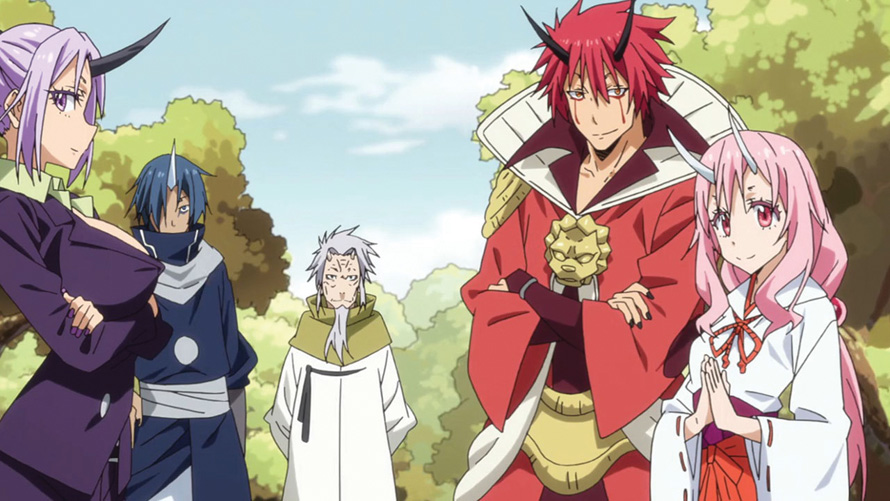
That Time I Got Reincarnated as a Slime has a very decompressed narrative structure, such that in the first eight episodes the viewers haven’t met all of the principal characters who appear in the opening and ending animations, and such that the epic, world-spanning conflicts hinted at in some episodes have not yet taken shape. At the time of this writing, it’s too early to tell whether That Time I Got Reincarnated as a Slime will maintain its bubbly and effervescent tone or whether it will veer off into more solemn and serious territory, but I have high hopes that the series will remain a highlight of the fall 2018 anime season, and I await each new episode with bated breath.
The unflagging optimism of That Time I Got Reincarnated at a Slime is a welcome change of pace in an genre dominated by grimdark anti-heroes and juvenile power fantasies. Give it a try, and you too will believe that a tiny slime can change the world.
That Time I Got Reincarnated at a Slime is available from Funimation and Crunchyroll.
This story appears in the April 2019 issue of Otaku USA Magazine. Click here to get a print copy.




